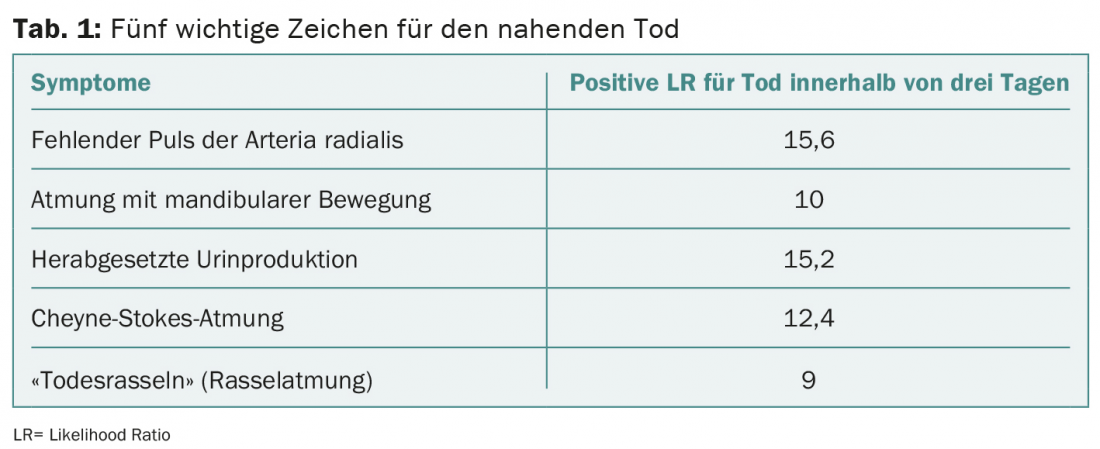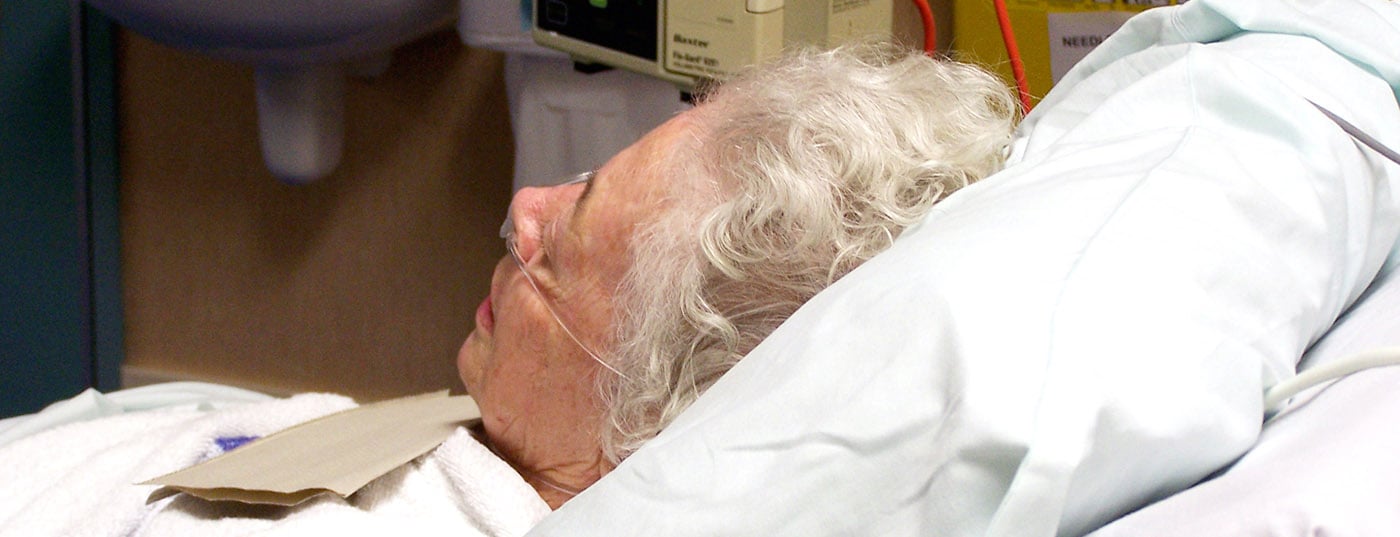A U.S. study investigated the question of which physical symptoms herald imminent death in seriously ill cancer patients. The authors reviewed more than 50 clinical signs and found high diagnostic relevance in eight of them.
The preliminary results of the prospective cohort study from the United States are available as an online publication of the journal Cancer. Included were 357 patients with advanced cancer who were in palliative care units of two specialized centers in the United States and Brazil. The average age of the patients was just under 60 years.
The authors had previously found in the same study population in 2014 that there were five highly specific physical signs associated with death occurring within three days (Table 1) [1]. With these symptoms, a more informed diagnosis of impending death can be made, which is of great importance to both the patient and family members, according to the team led by David Hui, MD, Houston. Aggressive therapies that negatively affect the last hours can be omitted – relatives and patients are offered the opportunity to say goodbye and choose the place of death themselves (e.g. discharge to home).

The present study again significantly extended the diagnostic spectrum: it tested the frequency and onset of 52 additional clinical signs that, according to the literature, may predict imminent death.
Eight physical signs help assess prognosis
From the beginning of entry into the palliative care unit until death or discharge, the 52 physical signs were systematically collected every twelve hours. From this, we calculated the likelihood ratio (LR) of death occurring within three days, as well as the frequency and median time of occurrence.
In addition to the five already known, another eight signs are highly diagnostic of impending death. They occurred in the last days of life in 5-78% of the 203 patients who died. The mortality risk was increased more than fivefold compared with patients without these symptoms (from then on, a sign was considered prognostically relevant). In ascending diagnostic importance were these symptoms:
- Decreased response to visual stimuli (positive LR 6.7; 95% CI 6.3-7.1).
- Neck hyperextension (positive LR 7.3; 95% CI 6.7-8).
- Decreased response to verbal stimuli (positive LR 8.3; 95% CI 7.7-9).
- Sagging of the nasolabial fold (positive LR 8.3; 95% CI 7.7-8.9).
- Upper gastrointestinal tract bleeding (positive LR 10.3; 95% CI 9.5-11.1).
- Grunting sounds on exhalation (positive LR 11.8; 95% CI 10.3-13.4).
- Inability to close eyelids (positive LR 13.6; 95% CI 11.7-15.5).
- Nonreactive pupils (positive LR 16.7; 95% CI 14.9-18.6).
So of the 62 clinical signs tested, Hui’s study team has so far been able to define 13 that will help doctors predict impending death in the future.
Source: Hui D, et al: Bedside clinical signs associated with impending death in patients with advanced cancer: preliminary findings of a prospective, longitudinal cohort study. Cancer 2015. doi: 10.1002/cncr.29048.
Literature:
- Hui D, et al: Clinical signs of impending death in cancer patients. Oncologist 2014 Jun; 19(6): 681-687.
InFo ONCOLOGY & HEMATOLOGY 2015; 3(5): 6.











